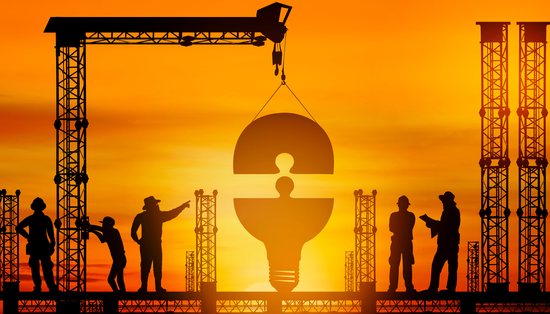
The Impacts of Post-Covid Construction
The post-Covid era brings a novel set of challenges for property owners, developers, and decision-makers that inevitably affect cost management. Our latest series takes a close look at the various shifts to expect in the construction industry and how companies can adapt to the redefined infrastructure. We begin by identifying the lingering market factors that affect project workflow.
For starters, the post-COVID period calls for additional costs in terms of safety procedures and navigating supply disruptions. Construction companies will need to allocate the necessary resources in running projects according to regulatory guidelines while staying profitable.
However, aside from creating short-term solutions, decision-makers and owners need to consider a resilient strategy for long-term sustainability derived from pandemic findings. Essentially, current economic and labor issues in construction point to the urgency for more flexible project management and data-driven budgeting.
Supply Chain Disruptions
COVID measures have led to increased safety protocols imposed by government bodies and industry authorities. These regulatory changes have resulted in bottlenecks and timeline delays in the supply of raw materials from various parts of the world, including primary sources such as China and India.
The lack of a steady supply of materials causes costly construction project delays and overruns, worsened by labor shortages. In many cases, decision-makers and owners need to seek alternate suppliers and transition to a model that diversifies material sourcing.
By doing so, there is a need to recalculate budgets in evaluating transportation routes and material costs. Specifically, some decision-makers have turned to domestic manufacturing as a long-term supply chain solution, reducing dependency on foreign suppliers.
Many construction companies are turning to digital and autonomous supply chains as a solution in the post-COVID climate. Decision-makers have developed more resilient, collaborative, and highly networked solutions based on the vulnerabilities exposed during the pandemic.
Lingering Labor Considerations
The pandemic led to a dip in construction demand in 2020, with the US losing about 975,000 jobs, roughly 13% of the total workforce. While business has picked up in 2021, the delays from the initial pandemic phase have lasting impacts upon ongoing timelines, pushing back estimated project completion dates.
Government officials continued to ramp up restriction measures across the country, which may cause further disruptions in the construction industry. Notably, 310 million Americans were under the directive to stay at home between March and April.
According to industry reports, construction labor hourly earnings reached a high in January 2021 (since Q3 2019), which may continue to soar as contractors struggle to find the labor for backlogged projects. Additionally, there is the concern of a prolonged gap in the labor workforce, as the Census Bureau notes that over 60% of construction workers who lost their jobs during the Great Recession left the industry permanently by 2013.
Increased Expenses
The post-COVID economy comes with several add-ons to economic and labor issues in construction, including PPE and routine on-site health screening/testing.
While there seems to be a positive outlook with the quick rebound of the construction industry, there will be some concerns with rising material costs. Specifically, many construction companies placed a bulk of new orders in March and April of the year, which will lead to inflationary pressures in the long run.
Many inflationary factors come from commodities closely tied to construction projects, such as lumber, steel, and electrical components. For example, steel, a necessity in vertical construction, has seen a dramatic price spike between 250-300%. Similarly, lumber has shown limited availability, with prices rising to 400% in some cases. Experts believe steel prices will stay high until the early part of 2022, while other building materials such as lumber and electrical components may return to pre-pandemic levels by 2023.
Responding to Market Dynamics
An unpredictable global crisis such as the pandemic creates lingering dynamics that will continue to affect the AEC industry. Decision-makers and owners need to assess the changes in supply and demand and consider backlogs.
In addition to actively bidding for new projects, there is a need to consider current supplies and labor capabilities. According to industry reports, 25% of construction companies have increased their backlogs, possibly as more clients turn to e-commerce solutions in response to pandemic trends.
Force majeure often applies in unprecedented situations like the pandemic. Decision-makers need to analyze contractual agreements, such as on-site time extensions, and additional fees that may come into effect. Therefore, decision-makers should consider re-structuring project frameworks to clarify such unforeseen scenarios with all involved parties (i.e., subcontractors and suppliers).
Market dynamics change all the time, and decision-makers need to receive the latest economic, industry, and customer data to achieve the most successful project outcomes. By partnering with a full-service construction consulting firm like WCCI, you can reduce the risks associated with planning and developing creative solutions from concept to completion.
WCCI – Your Trusted Partner in Construction Cost Management
WCCI is an experienced specialist in construction consultation and cost estimating. Our experts have decades of combined experience navigating the construction industry’s challenges, focusing on complex building projects. Through reliable analysis, insight, and cost estimates, decision-makers and owners can arrive at more realistic budgets that increase the success of their projects during times of uncertainty.
With a portfolio of over 4,000 construction projects worldwide, WCCI has the experience and insight to help you assess current economic conditions and their ramifications for labor, materials, and transportation, among other project considerations.
In the next part of the series, we will dive deeper into the effect of supply chain disruptions in the post-COVID construction industry. By doing so, we aim to provide a greater understanding of the revisions and adjustments required in creating accurate bids and plans that suit the current industry and market conditions.
Reach out to a WCCI expert to gain greater clarity in the post-COVID economy with reliable experts to help you think ahead.
Image Credits: Eroad @Creative Commons



